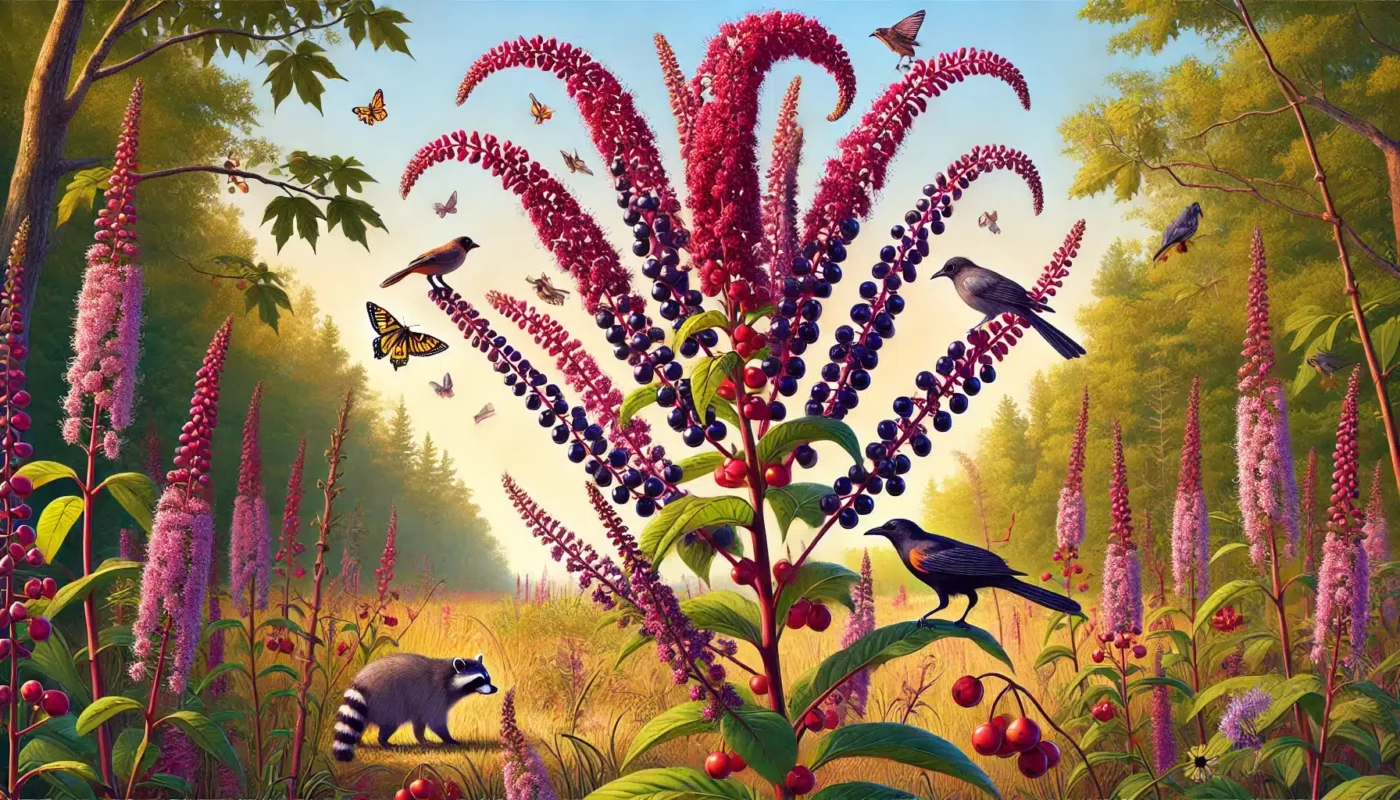Blog
Pokeweed: Wild beauty, which is more than just a weed
Plant birds cannot live without
When you hear the word “weed”, you probably think about unbearable plants that do little more than your tomatoes throw away or take over their flower beds. But not every so -called weed is a villain. Some are unknown heroes of the landscape.
Take American Pokuteed (American phytolacca), For example. This high, flashy perennial is not only another roadside nuisance – it is the power of wild nature, a cultural icon and even the subject of contemporary science.
How to notice Pokeweed in the wild
This high, flashy perennial is not only another roadside nuisance – it is the power of wild nature, a cultural icon and even the subject of contemporary science.
Poker does not hide in the background. It grows high – sometimes up to ten feet – with stems that are blushed by bright red or fuchsia. These thick, empty stems even provide small places for nesting of native bees. Its leaves are wide, smooth and can stretch almost the foot.
In the summer, Pokeweed shows up with pink flowers clusters, and in autumn drips with shiny black berries. These berries once created dyes, inks and even a bit of color for wine during the day.
Survived in difficult places
This plant is a flowering master when others fail. He loves disturbed earth – think about the roads, old fields or forest edges – and digs deeply with taproot, which can reach almost two feet in the soil.
This root system not only returns it from year to year, but also helps plants support dry spells. Even more impressive, Pokeweed can pull heavy metals, such as cadmium from the ground, which makes it useful for cleaning contaminated soils.
Why wild nature does not have enough
Birds and animals see how they do it very differently than gardeners. His berries are a feast of singing birds, such as cardinals and lands, as well as pigeons and quails. Sheds of sheds, foxes and opos are also crunchy on them. I have some Bobhite quail on my little farm, which absolutely these things!
Flowers are attracted by pollinators – sticks, butterflies, wasps and flies – while the leaves feed the caterpillars of the giant moth of the leopard. And thanks to the growth similar to the bush, Pokeweed even offers shadow and shelter for nursing birds and reptiles.
In many ways, it behaves more than a bush than a simple perennials.
Folk traditions and human curiosity
In the south, people once collected a young blow to cook in “Poke Salad” or “Poke Sallet”. But here is the hook: unless it is prepared carefully, the plant is completely poisonous.
People healers also used it as a cure for everything, from sore throat to arthritis, although doctors strongly warn against using it. But look at it chemical properties. Having said, keep doing tests And be careful … Even while service.
In addition to food and remedies, his deep purple berries doubled as an ink and dye. This brave appearance even caught the eye of European gardeners who bred him as a decorative peculiarity.
Possible dark side for us people
Despite all his beauty, Pośweed has a dangerous blow. Its roots, seeds and older leaves contain Toxic relationships This can cause a serious disease in humans. Symptoms of poisoning include nausea, stomach cramps, difficulty breathing, and in severe cases.
The study at Kentucky was registered by over 1,600 cases of poisoning in 2000–2019, mainly from children from berries. Fortunately, no one was fatal, but a lot led to hospital visits. While birds and many mammals can safely enjoy berries, people do not have the same happiness.
Respecting the plant
Pokeweed is full of contradictions – as if stimulating, but dangerous, “earning”, but necessary, feared, but celebrated. He feeds on wild nature, supports pollinators, helps cleanse the soil and adds a dramatic color to the landscape. At the same time, it requires caution from people who may be tempted to collect it, so be careful.
Ultimately, Pokeweed reminds us that even plants that we skip – or a curse – can play powerful roles in the world of nature. He is not only a player in the background in the eastern landscape; This is a bold reminder of immunity, resourcefulness and wild balance of nature.

